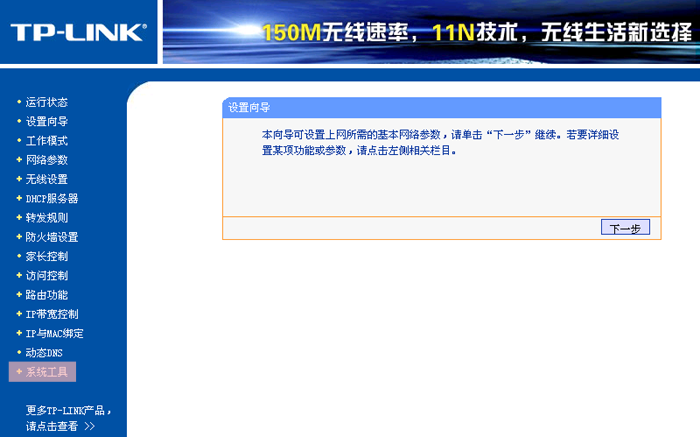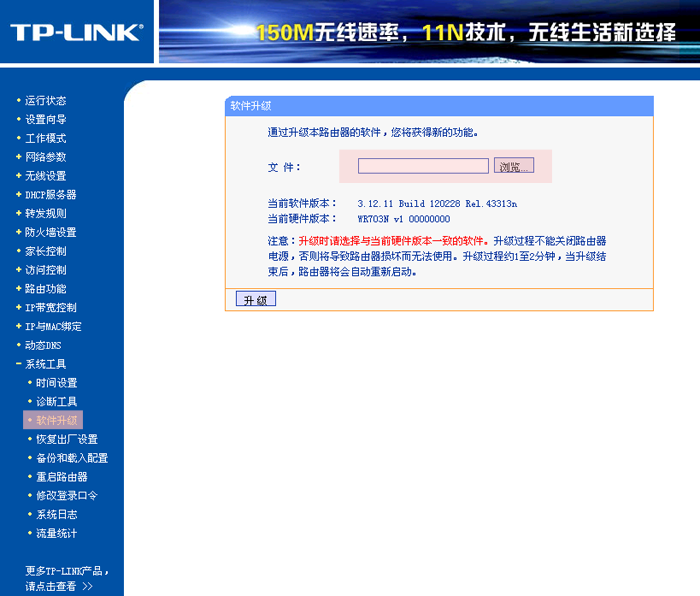Difference between revisions of "Getting Started"
(→Flashing Meteobridge Firmware to WL-330N3G) |
(→Flashing Meteobridge Firmware to WL-330N3G) |
||
| Line 19: | Line 19: | ||
==Flashing Meteobridge Firmware to WL-330N3G== | ==Flashing Meteobridge Firmware to WL-330N3G== | ||
| − | As ASUS WL-330N3G cannot be flashed by its stock web interface, it is necessary that you setup a TFTP environment on your Linux system (Windows will also work similar, but this description just explains the Linux way). First of all the router needs to toggled into "TFTP update mode". This is done by keeping the button on the top pressed for 5-10 seconds while doing a power cycle. | + | As ASUS WL-330N3G cannot be flashed by its stock web interface, it is necessary that you setup a TFTP environment on your Linux system (Windows will also work similar, but this description just explains the Linux way). First of all the router needs to toggled into "TFTP update mode". This is done by keeping the button on the top pressed for 5-10 seconds while doing a power cycle. After a couple of seconds the power LED starts a very slow blinking. You can now release the button. Router now waits for being firmware-updated via TFTP. TFTP update is very traight forward and can be done by the script below.<pre>#!/bin/sh |
# | # | ||
if [ "$1" = "" ] | if [ "$1" = "" ] | ||
Revision as of 02:58, 7 January 2013
To make a Meteobridge out of TP-LINK routers TL-MR3020 or TL-WR703N, you simply habe to install an applicable Meteobridge firmware image. Flashing the firmware can be done with the firmware update functions the router's stock firmware does provide. By doing so you will void the TP-LINK warranty, but having the cheap price in mind you will certainly not face a substantial financial risk in the unlikely event that you brick the router.
Flashing Meteobridge Firmware to TL-MR3020
Please consult the TP-Link manual to understand how to get access with your browser to its web interface. What the manual will tell you is basically that you have to connect your PC/Laptop via ethernet cable, and log in to the router's web interface (IP is 192.168.0.254, login name is "admin", password: "admin"). When you have access to web interface of TL-MR3020, overwrite factory firmware like a regular firmware update by meteobridge-tl-mr3020-v13.bin. Wait until unit restarts. After that it will be a Meteobridge client in standard configuration receiving an IP via DHCP from your router in the LAN.
Flashing Meteobridge Firmware to TL-WR703N
As TL-WR703N does only come with a Chinese web interface, it might be a bit tricky to find the right menu item to initiate firmware update. First you have to login with your browser. To achieve that you have to connect your PC/Laptop via ethernet cable, and log in to the router's web interface (IP is 192.168.1.1, login name is "admin", password: "admin"). When you have access to web interface of TL-WR703N, you select the item at the bottom of the left menu items, marked in light red on the picture below.
Next you choose sub menu item as marked in light red in the picture below and browse to target file by pressing light red marked file select dialog in the middle of the screen. Please use meteobridge-tl-wr703n-v13.bin to install Meteobridge firmware onto the device.
Finally, a "are you sure" dialog will pop up, please press "yes" button and wait until progress bar has reached 100%. Unit will reboot automatically. After reboot it will be a Meteobridge in standard configuration receiving an IP via DHCP from your router in the LAN.
Flashing Meteobridge Firmware to WL-330N3G
As ASUS WL-330N3G cannot be flashed by its stock web interface, it is necessary that you setup a TFTP environment on your Linux system (Windows will also work similar, but this description just explains the Linux way). First of all the router needs to toggled into "TFTP update mode". This is done by keeping the button on the top pressed for 5-10 seconds while doing a power cycle. After a couple of seconds the power LED starts a very slow blinking. You can now release the button. Router now waits for being firmware-updated via TFTP. TFTP update is very traight forward and can be done by the script below.#!/bin/sh # if [ "$1" = "" ] then echo "error: flash sys file missing as parameter" exit 1 else echo "power cycle WL-330N3G with button pressed and wait" echo "until power led does go off and on again. Then " echo "release button and press <RETURN>." read a echo "start flashing..." ifconfig br0:0 192.168.1.20 echo -ne "binary\ntrace\nrexmt 1\nput $1\nquit\n" | tftp 192.168.1.1 echo "...transfer done." echo "Wait until unit does reboot (will take at least 2 minutes). " echo "Do not remove from power during flash process!" fi
The script needs to be called with the flash update file as parameter. Please execute the script as root, otherwise "ifconfig" and "tftp" will not do or will ask for root password. "ifconfig" sets a virtual ethernet adapter with IP 192.168.1.20 on your Linux box, which is the IP the router expects to get the firmware update from. IP of router in update mode is 192.168.1.1, which hopefully will not do a collision with one of your other devices. If there is a collision, switch off the other devices during flash. After data has been transferred via TFTP you have to wait a couple of minutes until flash process inside the router is done and router restarts itself. Restart switches off all LEDs for a short time. Now it is safe to disconnect the router from power. Interrupting the flash processes by a power cycle will brick the router.
IP Signaling
When Meteobridge is connected to your LAN it will try to receive a dynamic IP from your DHCP server during boot. Wait until blinking of the largest LED has stopped. Do a short press on the the transparent push button on top of the large LED (TL-MR3020) or a short press of the reset button behind the pinhole at the back of the unit (TL-WR703N). Now LED will start signaling the IP.
Meteobridge will signal its IP by pulsing the LED beneath the pressed button (TL-MR3020) or the blue LED on the top of the device (TL-WR703N). Sequence begins with LED going off, then each of the four numbers (delimited by a dot) will be signaled one by one. The dot between the numbers will be signaled by a "H" (LED shines bright). Each number is signaled by blinking digit per digit. Each digit is represented by a "M" (LED shines medium dimmed) repeated as often as the digit tells us. The zero digit is signaled by ten blinks. After having done this for all digits of all numbers of the IP, the end is signaled by LED staying off a while like it started with. When Sequenze is done, the LED is constantly turned on again.
Example: IP 192.168.10.77 Legend: M = LED medium dimmed, H = LED shines bright, _ = LED is dark
Signal: Comment ___M___M_M_M_M_M_M_M_M_M___M_M___H 192 ___M___M_M_M_M_M_M___M_M_M_M_M_M_M_M___H 168 ___M___M_M_M_M_M_M_M_M_M_M___H 10 ___M_M_M_M_M_M_M___M_M_M_M_M_M_M___ 77
When Meteobridge is connected via LAN it will signal the LAN IP. To get the WLAN IP signaled in that case, please disconnect ethernet cable from meteobridge's LAN port and start IP signaling again. This time WLAN IP will be signaled.
If you don't like reading the blinks, you can also use an IP scanner (for example: Advanced IP Scanner) or you can look into the logs of your router that provides IPs via DHCP for clients in the LAN/WLAN.
When a FAT formatted USB stick is connected to the USB port, a file "network.log" is written to the USB stick in addition to the LED blinking. The file will look like this:Sat Jan 5 00:23:16 UTC 2013 MAC: 90:F6:52:C5:2A:B7 LAN IP: 192.168.123.245
Cloud Simulator for Network Configuration
If Meteobridge client cannot connect to your LAN or your LAN does not provide a DHCP service, large LED will not leave fast-blinking mode. To get network settings fixed, you can define the correct network parameters in a simulator in the Internet, which works as follows.
- Please browse to config.meteobridge.com. There you will find a simulation of the Meteobridge web interface. Please select the "Setup Network" tab and configure settings as needed for your specific network situation.
- When settings are done, please press "save" and change to "Download" tab which will cause your browser to start downloading a configuration file named "config.tgz".
- Please store that file (as is, do not unpack) on a USB stick formatted as FAT and start the Meteobridge with the USB stick plugged into the USB port of Meteobridge. When network settings are right, Meteobridge will stop with slow and fast blinking and turn on the LED constantly.
- You can now remove the USB stick, it is no longer needed. File "config.tgz" on USB stick has been used and renamed to "config.tgz.done".
First Login
When you have done the flashing of your meteobridge and initial network setup done, you can reach meteobridge for final configuration with your browser by typing in its IP as URL.
As login is protected by a password, your browser will ask for a user name and password. Please enter meteobridge as user und also meteobridge as password. While the user cannot be changed, you can change the password later on. Sections listed in the setup menu at the left will tell you how to finalize configuration so that your weather data gets finally uploaded to Weather Underground.
Your browser will show you meteobridge's web interface with 5 tabs. Please go through all these tabs and make the required settings. The page will show warnings for all still missing essentials until you have worked through all of this. It is just a few steps, which will be explained in the setup chapters, page by page.
Back to Defaults
When you have misconfigured the network or system password in a way that you can't no longer reach meteobridge, you can revert the system back to defaults by pressing the transparent and illuminated button of TL-MR3020 or the reset button at the back of TL-WR703N at the back behind a pin hole. By pushing these buttons you can revert to defaults in two ways.
- Reset to default network operation is done by pressing the button and keeping it presses until LED goes on again for the first time. Now release button and system will restart with default network configuration, which is LAN DHCP client mode. Network settings done before are still stored inside meteobridge when unit has started in LAN DHCP client mode, but these will need additional "Save" clicks to be made active again.
- Reset password is done by pressing button and keeping it pressed until LED goes on for the second time. Meteobridge will reboot and will be available with default password via ssh (user root, password meteobridge) and http (user meteobridge, password meteobridge).
Flash Again
When you need to flash a new meteobridge firmware to your device, you can do that by going to "Setup Network" tab und pressing "Expert Mode (OpenWrt)" button. This will bring you to the openwrt SW stack below meteobridge application software stack. Login with your meteobridge password and goto "System" tab. Select sub tab "Backup / Flash Firmware" and use offered "flash new firmware" section. Unmark "keep settings" option and start flashing. Keep device connected to power, it wil restart automatically.

